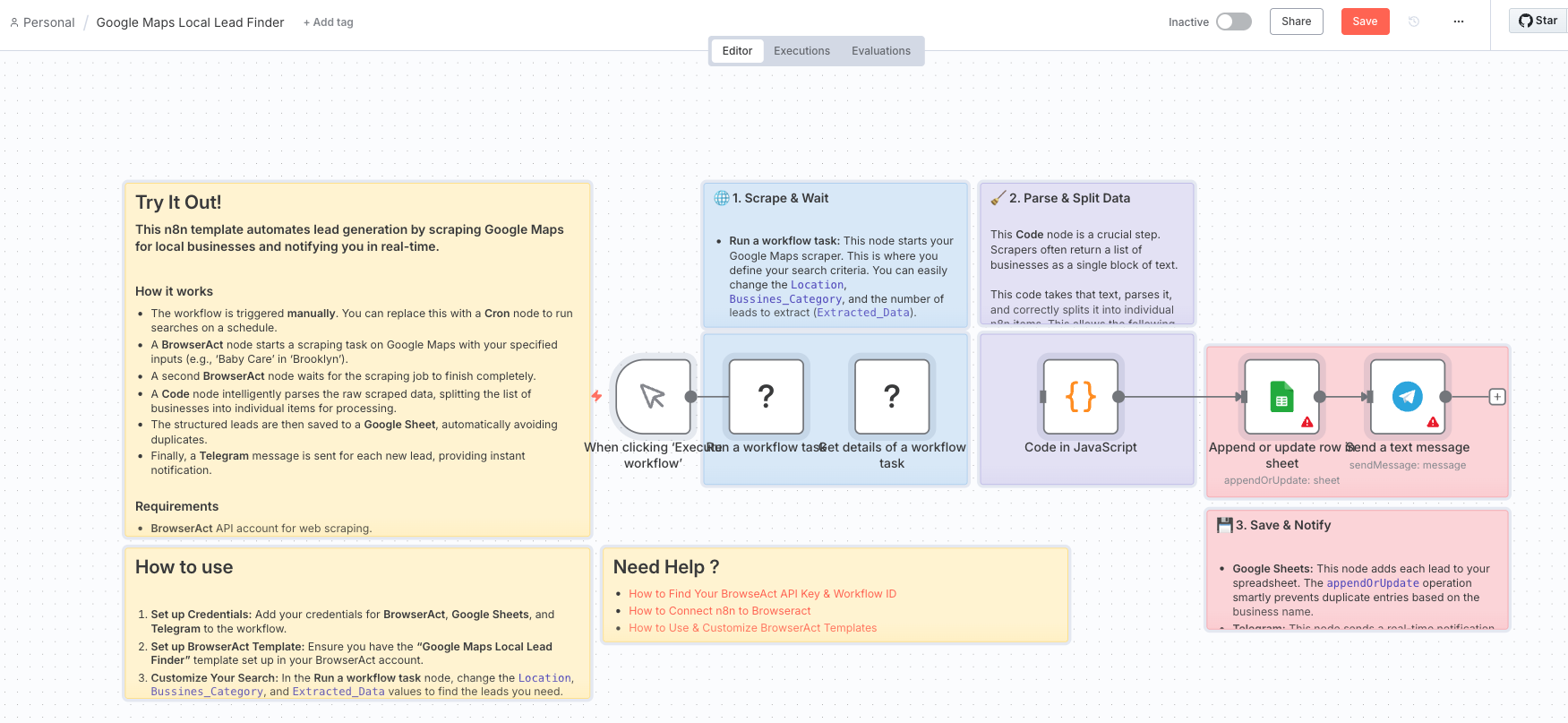How to Share and Use Workflows in n8n Using JSON Files

Complete beginner's tutorial on importing and exporting n8n workflows with JSON files. Discover how to download workflow blueprints, import them into n8n, configure credentials, and share automation solutions. Includes best practices, troubleshooting tips, and collaboration strategies.
This beginner-friendly guide will walk you through the process of importing and exporting workflows in n8n using JSON files, enabling seamless workflow sharing and collaboration.
Importing a JSON Workflow into n8n
Follow these simple steps to import a workflow from a JSON file:
Step 1: Log in to n8n
- Access your n8n instance (either cloud or self-hosted)
- Sign in with your credentials
Step 2: Create a New Workflow
- Click on "Create Workflow" button
- This will open a blank workflow canvas

Step 3: Import the JSON File
- Look for the "..." (three dots) menu button, typically located in the top-right corner
- Click on it and select "Import from File" from the dropdown menu
- Browse your computer and select the JSON workflow file you want to import
- The workflow will be loaded onto your canvas

Step 4: Configure the Workflow
- Review all the nodes in the imported workflow
- Follow any prompts or instructions provided by the workflow
- Configure necessary credentials, API connections, and parameters for each node
- Set up any required authentication or account connections
- Test your workflow to ensure it functions correctly
- Save and activate the workflow when ready

Exporting Your Workflow as a JSON File
To share your n8n workflow with others, export it as a JSON file:
Step 1: Open Your Workflow
- Navigate to the workflow you want to export
Step 2: Download the JSON File
- Click the "..." (three dots) menu button
- Select "Download" from the dropdown menu
- The workflow JSON file will be downloaded to your computer automatically
Step 3: Share Your Workflow
- Share the downloaded JSON file with colleagues, team members, or the n8n community
- Recipients can import the file using the import steps outlined above

Best Practices
- Review before activating: Always check imported workflows thoroughly before running them in production
- Update credentials: Remember to reconfigure all authentication and API credentials after importing
- Test thoroughly: Run test executions to verify the workflow operates as expected
- Document your workflows: Add notes within your workflow to help others understand its purpose and configuration
- Organize your files: Use descriptive file names when saving JSON exports (e.g., "customer-onboarding-workflow.json")
- Version control: Consider keeping multiple versions of your workflows as you make improvements
Troubleshooting Tips
- If a workflow fails after import, check that all required nodes and integrations are available in your n8n instance
- Ensure you have the necessary permissions and API access for third-party services used in the workflow
- Review the execution logs to identify any configuration issues
That's all there is to it! You can now easily import and export workflows in n8n, making it simple to share automation solutions and collaborate with others.

Relative Resources

How to Set Up LinkedIn Two-Factor Authentication in BrowserAct

Unlock Powerful Automation with BrowserAct Integrations

BrowserAct Integration with Make: Complete Setup Guide

2025 Best AI Assistant Tools: Our In-Depth Review
Latest Resources

How to Share and Use Workflows in Make Using JSON Files

Top 10 Reddit Scraper Tools for Data Extraction in 2025

How to Scrape Reddit: 5 Proven Methods for 2025
